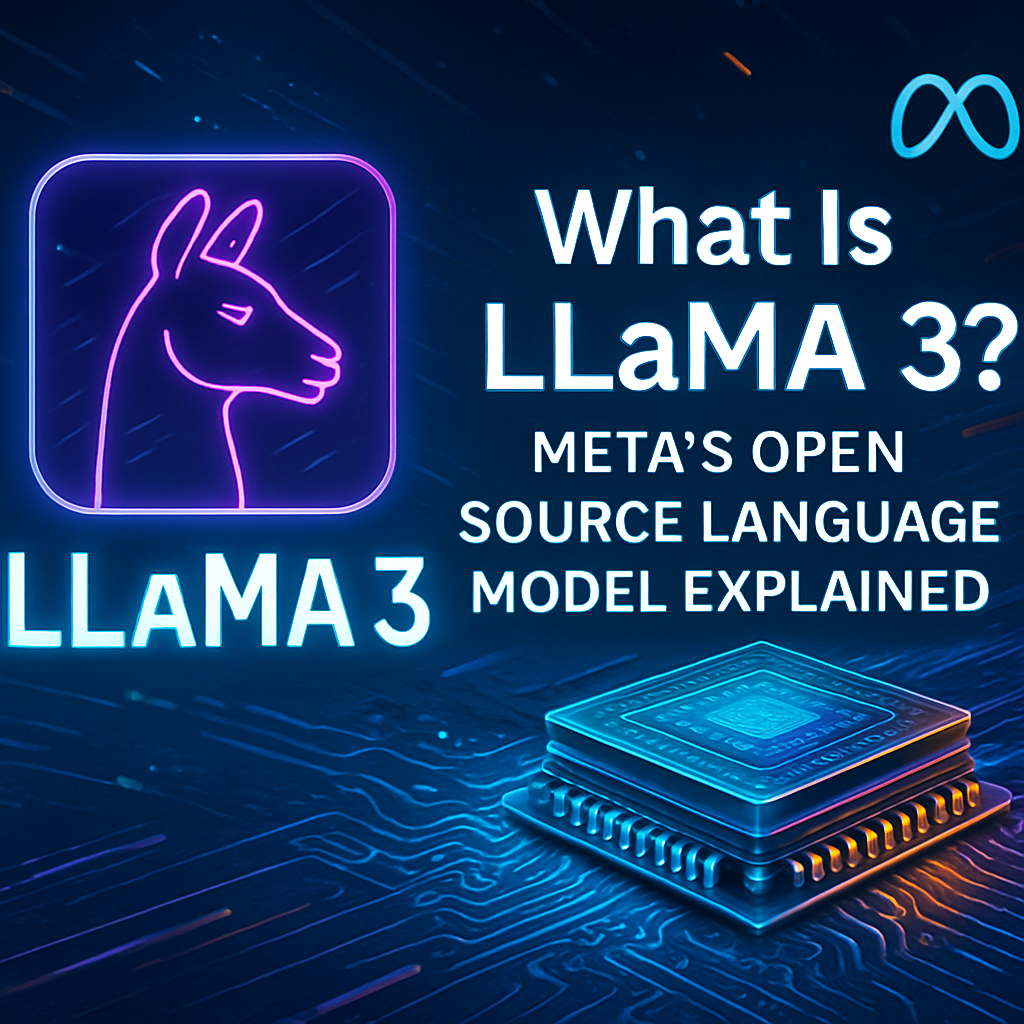
Meta has officially launched Llama 3, the latest version of its open-source large language model (LLM) series, and it’s already making waves in the AI community. But what exactly is Llama 3, how does it work, and why does it matter in the increasingly competitive world of AI?
This article breaks down everything you need to know about Llama 3 explained: from its core features and improvements, to its role in Meta’s open-source AI strategy.
What Is Llama 3?
LLaMA, short for “Large Language Model Meta AI,” is a series of open-source AI models designed to perform natural language processing tasks—such as generating text, summarizing information, answering questions, and more.
Llama 3 is the third and most powerful generation of this model. It builds upon the foundation laid by Llama 2, with better performance, scalability, and compatibility for real-world applications. Meta released Llama 3 in April 2025, targeting developers, researchers, and startups looking for an alternative to closed-source models like OpenAI’s GPT.
What’s New in Llama 3?
Meta’s Llama 3 comes with several notable upgrades:
- Improved Training Data
Llama 3 was trained on a more diverse and massive dataset that includes a mix of public web data, academic papers, code repositories, and multi-language content. This gives it a stronger grasp of factual knowledge and context. - Higher Model Sizes
Llama 3 is available in multiple sizes—most notably 8B, 13B, and a planned 65B version—offering flexibility for different use cases. - Better Performance
Benchmarks show Llama 3 significantly outperforms Llama 2 in natural language understanding, code generation, reasoning, and multilingual tasks. - Open Weight Access
Meta continues its commitment to open source by providing model weights, tokenizer code, and inference tools freely for non-commercial and research purposes. - Robust Safety Tools
The model includes alignment improvements to reduce hallucinations, bias, and misuse, making it more responsible for public deployment.
Use Cases for Llama 3
Llama 3 can be used across a wide range of applications:
- Chatbots and virtual assistants
- Automated content generation
- Translation and summarization tools
- Programming assistance
- Educational tutors
- Customer service automation
Thanks to its open nature, developers can fine-tune Llama 3 for domain-specific tasks without needing to build from scratch.
Llama 3 vs GPT-4 vs Claude 3
| Feature | Llama 3 | GPT-4 (OpenAI) | Claude 3 (Anthropic) |
|---|---|---|---|
| Open Source | ✅ Yes | ❌ No | ❌ No |
| Accessibility | Free (non-commercial) | Paid via API | Paid via API |
| Training Data Transparency | ✅ Open | ❌ Limited | ❌ Limited |
| Fine-tuning | ✅ Supported | ❌ Limited | ❌ Limited |
| Performance | Comparable | Stronger in some areas | Strong on safety |
Llama 3 stands out for its transparency, flexibility, and community-driven development.
Why Open Source Matters
By releasing Llama 3 openly, Meta empowers:
- Startups to innovate without paying high API fees
- Academia to conduct unbiased research
- Governments and non-profits to develop language tools in underserved regions
It also pushes competitors to offer better transparency and control.
Limitations & Considerations
Despite its strengths, Llama 3 has limitations:
- Requires significant computing power for training and inference
- Commercial usage is restricted without Meta’s approval
- Safety and misuse remain ongoing challenges
Meta acknowledges that Llama 3 is not a complete solution—but a foundation for collaborative AI development.
Conclusion
Llama 3 is a major step forward for open-source AI. It blends cutting-edge performance with accessibility and transparency, offering a powerful alternative to proprietary models.
Whether you’re building an AI startup, experimenting with machine learning, or simply curious about the next wave of language models, Llama 3 is a name to watch in 2025.
Related Reads:
